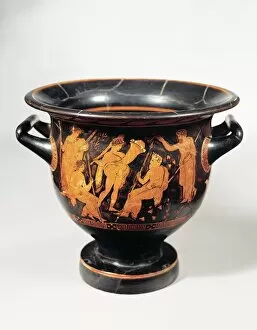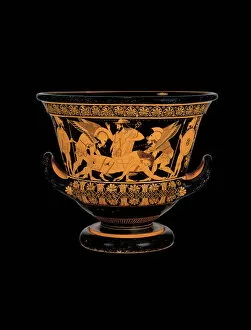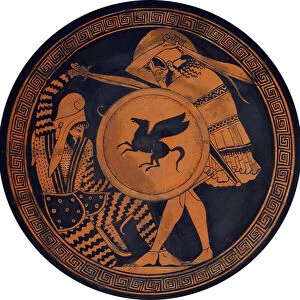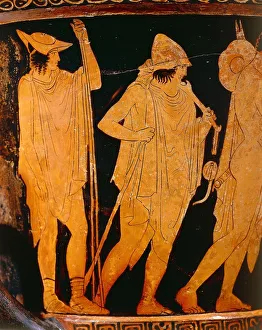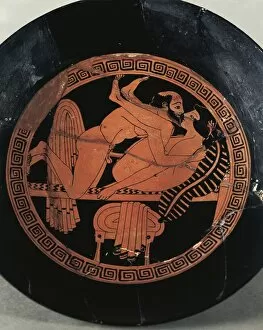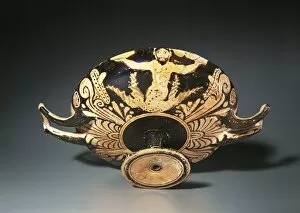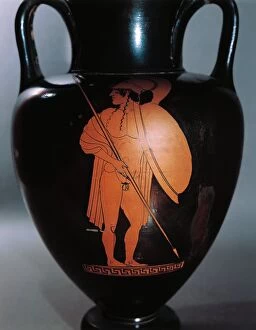Red Figure Pottery Collection
Red figure pottery is a captivating art form that flourished in ancient Greece from the 6th to the 4th century BC
All Professionally Made to Order for Quick Shipping
Red figure pottery is a captivating art form that flourished in ancient Greece from the 6th to the 4th century BC. This technique involved painting figures and scenes on ceramic vessels, creating stunning masterpieces that still mesmerize us today. One remarkable example of the Euphronios Krater, also known as the Sarpedon krater. Crafted around 510-500 BC, it depicts Sarpedon's body being carried by Hypnos (the god of sleep) and Thanatos (the personification of death). The intricate details and lifelike expressions showcase the skill and artistry of its creator. Another awe-inspiring piece is The Garden of the Hesperides Apulian Krater from around 360 BC. Painted by Lycurgus Painter, this artwork portrays a mythical scene with nymphs in a lush garden. The vibrant colors and delicate brushwork transport us to an enchanting world. The Karneia festival comes alive in Dancers during the Karneia, a detail captured on ceramic. This lively depiction showcases dancers moving gracefully to celebrate this important Spartan event. A fascinating glimpse into ancient craftsmanship can be found in Krater showing scene of potter at work under gaze of Athena. It reveals a potter diligently shaping clay while being observed by Athena herself, symbolizing her patronage over artisans. The Tuna Fish Seller Krater takes us back to the bustling markets of ancient times. Created in the 4th century BC by Pittore del venditore di tonno, it showcases vendors selling their wares with meticulous attention to detail. Satyr dancing Apulian Krater captures a playful moment between satyrs during ca 420-410 BC. Painted by Sisyphus Painter, this artwork exudes energy through dynamic poses and expressive faces. The Pronomos Vase crafted around 400 BC demonstrates exceptional skill.

